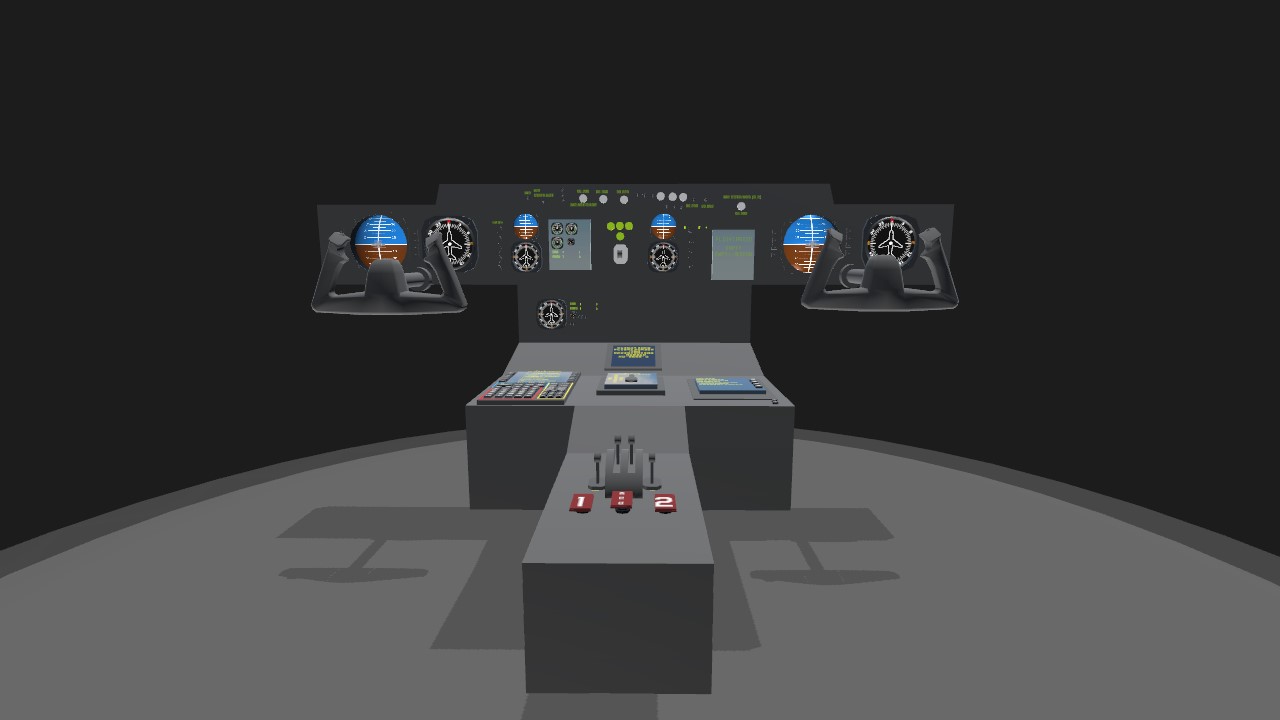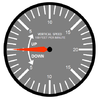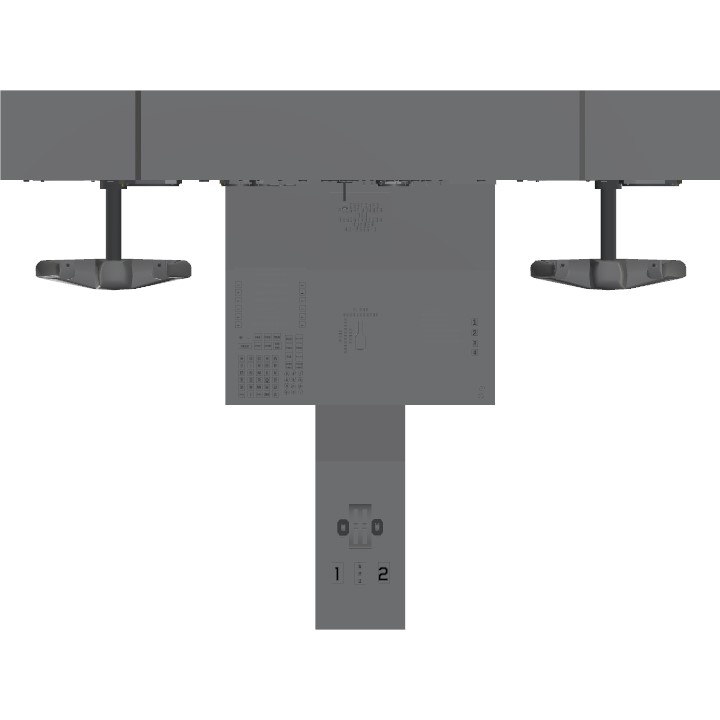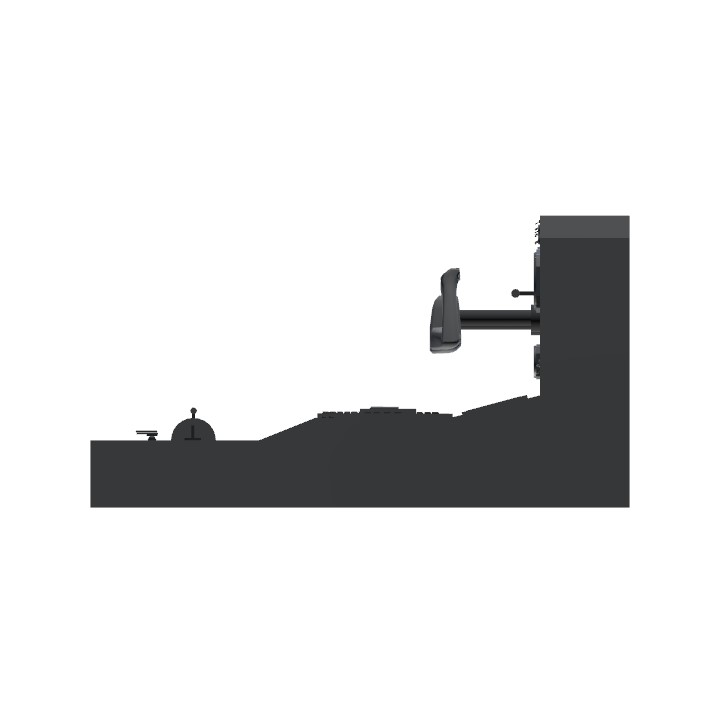THE FMS PANEL WAS MADE BY @JUANNOTALT
Controls
AG1/2/3 - Engines, APU
Reverse thrust (depends on the controls) - CTRL (brakes)
Throttle - Shift (throttle)
Landing Gear - G
Trim up - Trim
VTOL up - Flaps
The other buttons are decorations
Enjoya!
To make the cockpit more realistic, I took a more detailed cockpit image.

The funky trees took so long to find. Because I couldn't code.
I edited parts of the wasp and put it to the cockpit.
For more informations.
Here's a wiki explanation of Flight Instruments.
Flight instruments are the instruments in the cockpit of an aircraft that provide the pilot with data about the flight situation of that aircraft, such as altitude, airspeed, vertical speed, heading and much more other crucial information in flight. They improve safety by allowing the pilot to fly the aircraft in level flight, and make turns, without a reference outside the aircraft such as the horizon. Visual flight rules (VFR) require an airspeed indicator, an altimeter, and a compass or other suitable magnetic direction indicator. Instrument flight rules (IFR) additionally require a gyroscopic pitch-bank (artificial horizon), direction (directional gyro) and rate of turn indicator, plus a slip-skid indicator, adjustable altimeter, and a clock. Flight into instrument meteorological conditions (IMC) require radio navigation instruments for precise takeoffs and landings.[1]:?3–1?
The term is sometimes used loosely as a synonym for cockpit instruments as a whole, in which context it can include engine instruments, navigational and communication equipment. Many modern aircraft have electronic flight instrument systems.
Most regulated aircraft have these flight instruments as dictated by the US Code of Federal Regulations, Title 14, Part 91. They are grouped according to pitot-static system, compass systems, and gyroscopic instruments.
Altimeter

he altimeter shows the aircraft's altitude above sea-level by measuring the difference between the pressure in a stack of aneroid capsules inside the altimeter and the atmospheric pressure obtained through the static system. The most common unit for altimeter calibration worldwide is hectopascals (hPa), except for North America and Japan where inches of mercury (inHg) are used.[2] The altimeter is adjustable for local barometric pressure which must be set correctly to obtain accurate altitude readings, usually in either feet or meters. As the aircraft ascends, the capsules expand and the static pressure drops, causing the altimeter to indicate a higher altitude. The opposite effect occurs when descending. With the advancement in aviation and increased altitude ceiling, the altimeter dial had to be altered for use both at higher and lower altitudes. Hence when the needles were indicating lower altitudes i.e. the first 360-degree operation of the pointers was delineated by the appearance of a small window with oblique lines warning the pilot that he or she is nearer to the ground. This modification was introduced in the early sixties after the recurrence of air accidents caused by the confusion in the pilot's mind. At higher altitudes, the window will disappear.

The airspeed indicator shows the aircraft's speed relative to the surrounding air. Knots is the currently most used unit, but kilometers per hour is sometimes used instead. The airspeed indicator works by measuring the ram-air pressure in the aircraft's Pitot tube relative to the ambient static pressure. The indicated airspeed (IAS) must be corrected for nonstandard pressure and temperature in order to obtain the true airspeed (TAS). The instrument is color coded to indicate important airspeeds such as the stall speed, never-exceed airspeed, or safe flap operation speeds
The VSI (also sometimes called a variometer, or rate of climb indicator) senses changing air pressure, and displays that information to the pilot as a rate of climb or descent in feet per minute, meters per second or knots.
The cockpit was mainly inspired of the Boeing 737 cockpit.
Here's the demo of the Label Input.

The exact code for the Throttle and fuel is <alpha=#80>THR:<alpha=#FF><pos=33%><size=80%>[<mspace=0.001em>{Throttle > 0.0 ? "<mark=#20FF00FF>." : " "}<space={Throttle * 5}em>{Throttle > 0.0 ? "." : " "}</mspace></mark><space={(1-Throttle) * 5}em>]<br><size=100%><alpha=#80>FUEL:<alpha=#FF><pos=33%><size=80%>[<mspace=0.001em>{Fuel > 0.0 ? "<mark=#20FF00FF>." : " "}<space={Fuel * 5}em>{Fuel > 0.0 ? "." : " "}</mspace></mark><space={(1-Fuel) * 5}em>]
Thanks Jundroo for the code.
Specifications
General Characteristics
- Predecessor FMS panel
- Created On Windows
- Wingspan 26.3ft (8.0m)
- Length 19.7ft (6.0m)
- Height 10.8ft (3.3m)
- Empty Weight 4,908lbs (2,226kg)
- Loaded Weight 4,908lbs (2,226kg)
Performance
- Wing Loading N/A
- Wing Area 0.0ft2 (0.0m2)
- Drag Points 16405
Parts
- Number of Parts 246
- Control Surfaces 0
- Performance Cost 674






Full credits:
Jundroo for the funky trees label (throttles and fuel). The coding is really hard. So I took it from Jundroo's Wasp or F-18
JuanNotAlt's for the Flight Management System (FMS)
The old version is here